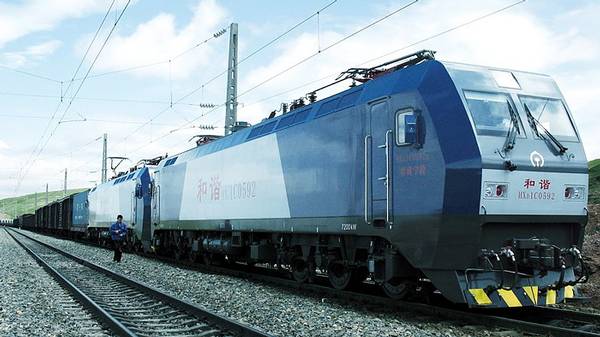Two major trends are currently driving the developers of new trains. The first is electric drives. Electrically powered trains have been around for a long time, but drive systems such as fuel cells, batteries, and hybrid drives are playing an increasingly important role. Behind this are both ecological and economic considerations. In the long term, for example, diesel drives will be phased out on non-electrified lines as well, partly to curb fuel costs.

A second major topic is already a reality in some areas of rail transport: autonomous driving. There are subways and even airport shuttle trains that completely do without a human driver. The advantages of autonomous driving are obvious: higher capacity, more flexibility, greater punctuality, and additional safety as well as energy savings. Projects for autonomous driving are also being driven forward in other areas of rail transport. Here, however, more complex issues have to be taken into account. A key factor here is V2X communication, which allows rail vehicles to communicate with each other and also with the surrounding infrastructure.
dSPACE offers you the complete solutions you need to develop and test new technologies. Whether rapid prototyping, HIL tests, sensor data management, or data rendering – We are your partner.

Challenges
Even though autonomous driving technologies have already become established in the rail sector, they still face a range of challenges:.
- A wide range of components and systems has to be covered.
- A high number of I/O channels is required to establish a completely virtual test environment.
- Adaptable testing solutions are needed – scalable from single components to a virtual train.
- Support of multiple parallel drive motors and support of a wide range of power electronics components
- It has to be possible to establish V2X communication.
dSPACE Solutions for Rail Industry
dSPACE gives you the tools you need to further develop your railway solutions. You can adapt our test system to individual components, and it is scalable from single components to a virtual train. It also supports multiple parallel motors and allows for the integration of a large number of power electronics. Multicore applications and multi-FPGA applications for large simulation models and a large number of I/O channels are also possible. Rely on us as a strong partner.
Rapid Prototyping
HIL Testing

Central Test Method for Validating ECUs
The dSPACE HIL test systems provide a simulated environment for efficient and reproducible validation of real ECUs in the laboratory 24/7. This increases test coverage and shortens validation times significantly. Our HIL solutions cover all vehicle domains from autonomous driving to zero emissions – starting with component testing and up to virtual vehicle testing.
Power HIL Testing

Closing the Gap Between HIL and Dynamometer Testing
With our power HIL systems, we offer ready-to-use solutions for testing any kind of inverter, including the controller and power electronics, at full power. Using real voltages and currents, our systems enable you to complete exceptionally rigorous tests. Our systems behave like a digital twin of the real system and allow for easy configuration with just a few clicks, which significantly reduces setup times.
Test Data Management

Data Management and Collaboration Software for Automated ECU Testing
SYNECT, our solution for the efficient and automated verification and validation of ECU software, helps engineers worldwide handle all test parameters, their dependencies, versions and variants, and the underlying requirements throughout the entire development process.
This results in consistent data versions and complete traceability as required in homologation processes, and an efficient reuse of data in other projects.
Data Replay

Validation of autonomous systems using recorded data
To ensure the safety of autonomous systems in the rail industry, the use of recorded real-world data is essential for certification and release strategies. This is because, unlike synthetic simulation data, the degree of fidelity of real-world data is indisputable.
Data Logging

Make data available faster and at lower cost
Real-world data is the most important resource for making autonomous rail mobility safe. Our job is to enable your data acquisition systems to respond quickly to new iterations of training and validation, which in turn enables the shortest data cycles. To do this, we provide a comprehensive solution for flexible data recording, advanced data insight and integrated data entry.
Sensor Data Management

No volume of data is too large if you have an efficient data management tool
Powerful data management lets you centralize, store, search, filter, preview, post-process, and analyze your recorded data to build data-driven capabilities for rail mobility applications. With dSPACE's sensor data management solution, you can quickly find what you are looking for in petabytes of data.

Development support from start to finish
Developing complex E/E systems and software with ever more safety-critical functions, especially in the area of autonomous systems, raises the question of guaranteeing function reliability. That's why dSPACE offers end-to-end expertise in functional safety, test strategy development as well as verification and validation in complex E/E processes - to support you from the earliest project stages to homologation.
dSPACE systems are easy to get up and running – however, if a project is more complex, if individual solutions are needed or if there is high time pressure, you can also trust dSPACE's fast, competent and reliable engineering services.












